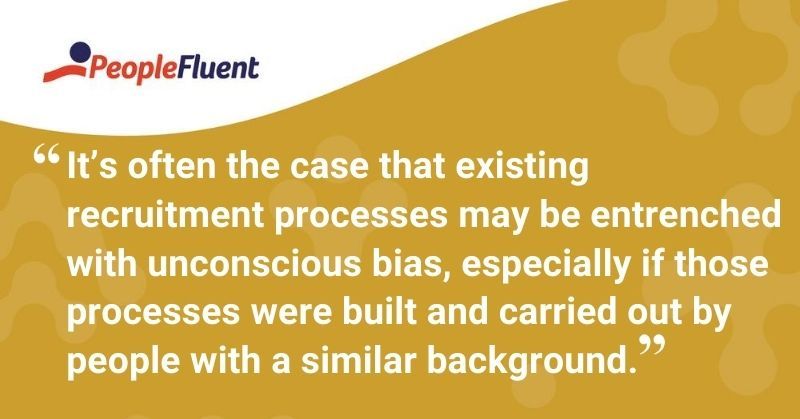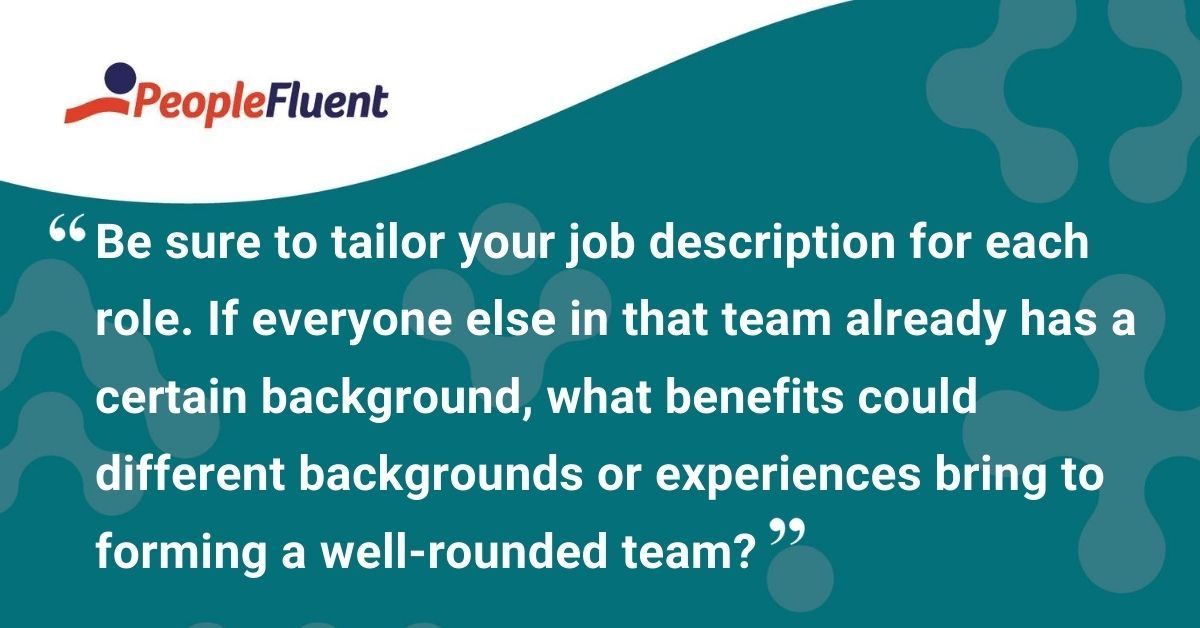Published: Mar 30, 2020Time to read: 5mins Category: Insights
4 Practical Ways to Recruit Diverse Talent
Based on the ebook ‘Diversity & Inclusion: How to Mitigate the Invisible Business Risk’, from our sister company, LEO Learning, diversity and inclusion expert (and 2019 Member of the British Empire, or MBE) Joanna Abeyie explores four practical ways to recruit diverse talent to your business.
Having looked at ways of attracting diverse talent to your business, the next stage is to analyze the recruitment process. It’s no use attracting a diverse range of backgrounds if they then face barriers during the actual recruitment process—whether that’s the application, interview, or task stages.
Here are four practical steps that you can take to review and refresh your recruitment process to increase the diversity within your workplace:
Test Your Existing Recruitment Processes
You can’t create an inclusive process if you don’t have the awareness of who you’re excluding. It’s often the case that existing recruitment processes may be entrenched with unconscious bias, especially if those processes were built and carried out by people with a similar background.
Building relationships with charities, awards, and membership bodies is crucial. These relationships can help you find candidates with a diverse range of backgrounds, experiences, and protected characteristics to help test your processes.
This will give you insights as to where the process may exclude certain people, helping you identify roadblocks and build a more inclusive process. There are multiple hidden differences that you will only be informed of if you educate yourself by proactively speaking to experts who can provide insights. When testing your hiring process, remember to:
- Check your processes with wider groups of people from different backgrounds and experiences. Charities, specialist consultancies, and focus groups can be asked to go through your process.
- Get feedback from people who have been through the process. If you’re asking candidates who were unsuccessful, offer something back to them by providing personalized feedback, focusing on what skills gaps they may need to bridge to be successful next time.
- Guarantee face-time. This is particularly relevant for companies who may be able to attract certain talent pools but rarely end up recruiting. It guarantees that applicants will be seen, even if their application wouldn’t normally have passed the shortlisting stage. This is a great way to highlight the root cause—are the CVs bad, or is the process restrictive?
- Dedicate the time to explore the process.

Recommended reading to download today: '5 Recruiting Metrics that Drive Business Value'
Ensure Your Process Focuses on Finding the Right Skills for the Role
It’s a bold step to revise your recruitment process and it’s one that will need support from across the business. Investing the time to explore alternative processes is essential to ensure inclusivity.
Application forms can be time-consuming to complete, ask for excessive detail, and/or have blanket requirements that may be "company policy", but will actually have little bearing on the ability to complete the role effectively.
Requirements such as previous experience in a certain sector or education levels often limit who will get through the process. Also, be sure to tailor your job description requirements for each role. If everyone else in that team already has a certain background, what benefits could different backgrounds or experiences bring to forming a well-rounded team?
More from the blog: '5 Candidate Sourcing Strategies to Build Your Talent Pipeline'
Interviews: Make Sure the Right Person is Asking the Right Questions
Using a standard set of questions may be perceived as a method that ensures parity for all candidates. However, this doesn’t recognize that different roles require different skills, meaning that standard questions can miss the mark.
This can be exacerbated by hiring managers carrying out interviews who may not have much experience. For example, we had a behavioral psychologist sit in to observe interviews, and noted that a candidate was observed as ‘lacking leadership skills’, yet at no point were they asked to demonstrate these skills. Without appropriate training or guidance, an interviewer may lack impartiality and allow their bias, or preference towards who they feel is the best candidate, to come into play.
Losing any fear, or getting familiar with differences, is the first step in tackling unconscious bias. So if, for example, you have a transgender person in an interview and aren’t sure how to address them, then ask them how they would like to be addressed. But also assure them that your question is to ensure you are being inclusive and respectful to them, not to isolate or alienate.

Also read: 'Increase Hiring Efficiency With These 4 Best Practices'
Implement a Dual ‘Reactive’ and ‘Proactive’ Recruitment Policy
There’s a lot to consider, and a lot to invest in. A common blocker is the number of resources required to implement the steps we’ve covered in both the attraction and recruitment stages. This can be avoided if stakeholders across the business buy in to the importance of making equality, diversity, and inclusion core to the business.
One key restriction is a lack of time, typically due to reactive recruiting policies. Someone leaves and there’s an urgency to get the right candidate in to replace them. There may be no contingency cover. Reactive recruitment rarely affords the time needed to allow for talent pools to be explored, and if you only work this way, instigating change is hard. If you always have someone working proactively on exploring talent pools, then you’ll build those relationships and cultivate a diverse bank of talent pools.
Having a dual ‘reactive’ and ‘proactive’ approach means you can still fill the urgent positions quickly, without losing momentum on building your approach to inclusive attraction and recruitment.
Many thanks to Joanna Abeyie, MBE for sharing her insights and expertise.
Editor’s Note: This blog post was originally published in February 2020 on our sister site, LEO Learning.
Discover How Recruitment Lets You Find the Right People—Fast
PeopleFluent helps you fill critical roles with the right people and the right skillsets on a global scale. At the same time, it helps you build your employer brand and sharpen your competitive edge.